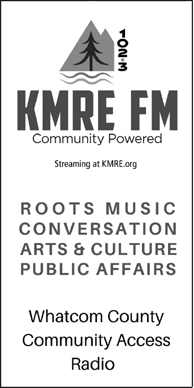Many Partners Join Efforts to Help This North Fork Nooksack Tributary
by Eli DeWitt,
Instream Project Manager
We have an exciting collaboration coming up between NSEA, Whatcom Land Trust (WLT) , Whatcom County Public Works (WCPW), and Whatcom Conservation District (WCD), with multiple projects taking place on Kenney Creek this summer and fall. Restoring this tributary of the North Fork Nooksack River will provide better access and improved upstream habitat for Chinook, coho, chum, and pink salmon, and other species of fish.
NSEA is planning to install 39 pieces of large woody debris (LWD) into this creek on property owned by WLT to create pools, improve habitat diversity, and help stabilize the streambank. We are also working with WLT to plant a riparian forest on the adjacent land with community volunteers. Downstream, WCPW will be removing two fish passage barriers: a culvert and a fish ladder. The barrier removals and LWD project are designed to work together to help hold grade in the stream, improve fish access, and provide fish habitat. We are so grateful to come together with these partners, combining our efforts, materials, funding, and support to accomplish projects that are good for fish, wildlife, and our community as a whole.
________________________________
Mulching Makes a Better Future for Young Plants
by Emily Towery,
Restoration Technician
Restoration technicians returned to a project site along the South Fork Nooksack River last week to spread mulch around the native trees and shrubs we planted there last spring. Mulching is highly beneficial to planting projects because it helps plants retain moisture, suppresses weeds, and improves soil health. These benefits are especially valuable in establishing vegetation in disturbed soils (like much of the land we work on) and will support the growth of a healthy forest. The goal for this project is for these plants to help stabilize the riverbank, which has eroding away, and to eventually shade the river to help keep water temperatures cooler for the Chinook salmon (and other fish) that live in it.





























